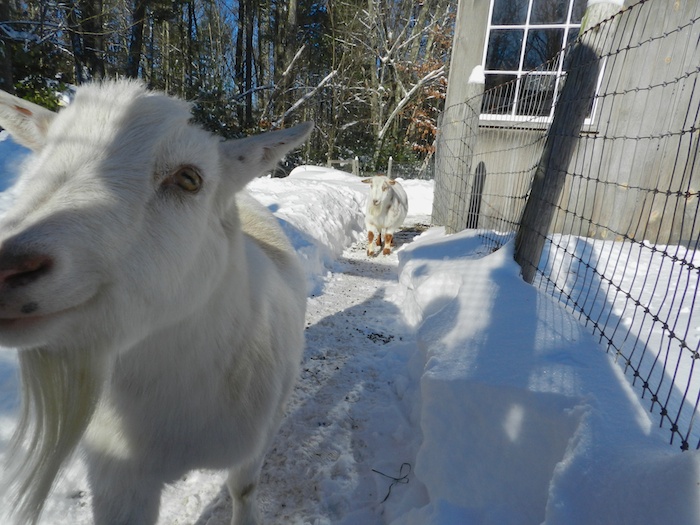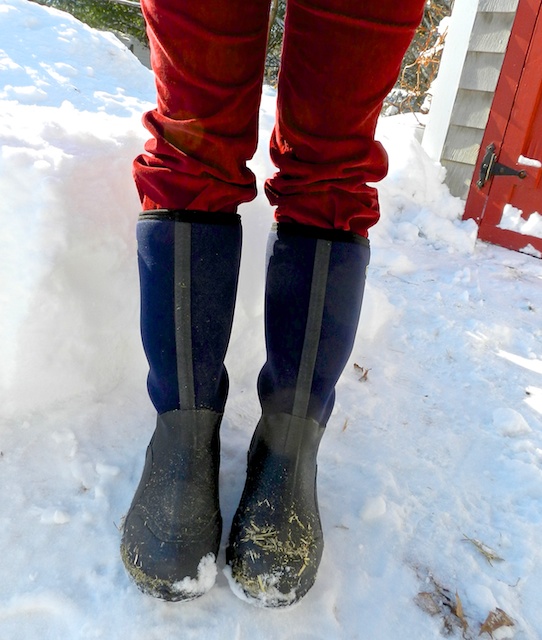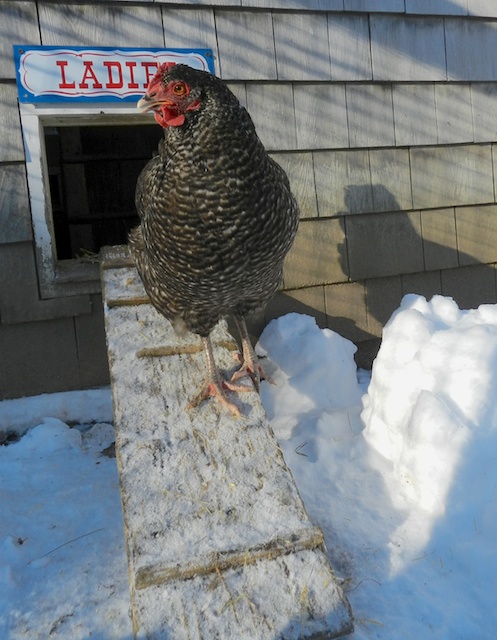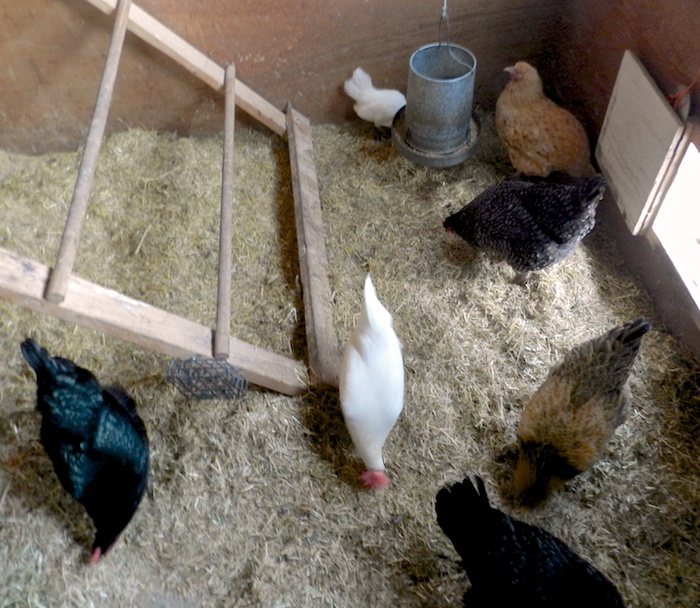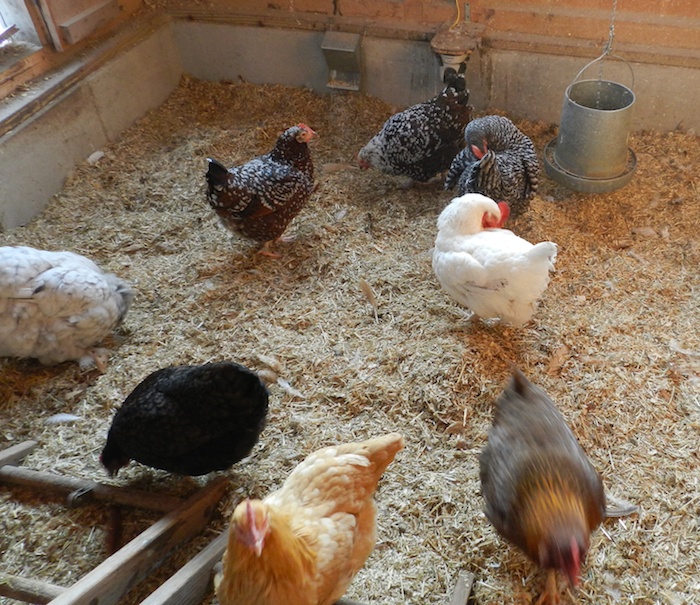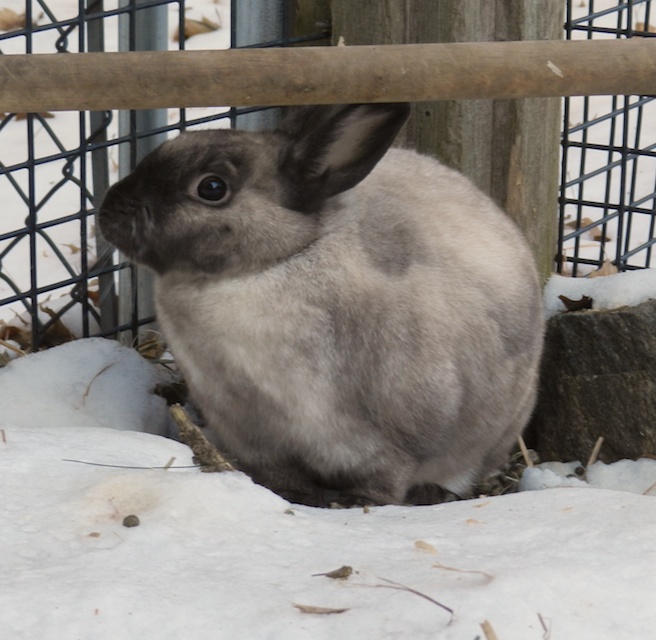Today’s post diverges a bit from my usual daily writings on this blog. For one thing, it’s longer. For another, it’s more about me than my animals. I’ve wanted to fill you in on my cochlear implants, but it’s been difficult to write about such a complex and personal journey. It took months of thought, and then a weekend writing retreat with a good friend to do it. Here is the result, Not surprisingly, because it is about my life, there are animals in it. Both Tonka and Lily make appearances.
A Life Transformed
Three years ago, on December 17, 2010, I walked into Lahey Hospital to undergo surgery that I had been thinking about for a long time. Ever since my teenage years, my hearing had been in a gradual decline. I was now fifty and I had a severe hearing loss. I wore two hearing aids; with them I could have a conversation, but only if the room was quiet, if my friend was close to me, and if she spoke clearly. Everyday interactions had become almost impossible. It was depressing and scary, but there was one more option for me. When I left Lahey that afternoon, I had a wide white bandage around my head. I’d received a cochlear implant (CI) in my left ear. The surgery gave me the possibility (though no guarantee) of better hearing. Three weeks later, after the swelling from the incision subsided, I returned to Lahey to have the CI activated. I sat in a small room with Nancy Cohen, my audiologist. I put the external processor (which looks like a hearing aid) behind my ear. Attached to that is a cord and a flat disk, which would transmit what the microphone picked up to the device that had been implanted inside of my skull. The disk is a magnet, and there was now a metal plate under my skin so it stuck right on. Nancy flipped some dials on a machine. She stimulated each electrode in turn to test if the device worked. It did. I heard ping, ping, ping, in varying pitches.
A normally hearing person gathers sound in through their external ears, which is then channeled inside, through the eardrums, where it ruffles tiny hairs. Those hairs act to transmit sound in the form of electrical currents to the brain. When the ear works properly this all happens seemingly instantaneously. A full range of sounds are all simply there, in your mind. It had been many years since that perfect system worked for me. I relied on hearing aids, which were only able to amplify the limited sounds gathered by my damaged system. Cochlear implants offered me the possibility of hearing a wider range, which I optimistically hoped would bring clarity to conversation. However I realistically knew that hearing with CIs is through electronic means. It does not return hearing as you know it. The ping, ping, pings confirmed this.
With my CI, a microphone perched on top of my ear collects sound. It points forward, which the human ear does not (so, right away, the CI is different than natural hearing.) This device (powered by batteries) turns sound into electrical patterns that are transmitted into the processor inside of my head. This becomes a code, which is sent to an array of electrodes on a fine wire that the surgeon implanted inside of my cochlea. That array stimulates the auditory nerve, which transmits the information to the brain. The squiggle of wire stimulating the cochlea provides input, but it is not the same as natural stimulation. The brain has a lot of work to do to make sense of it. To add to the difficulty, each CI has to be programmed for the individual user. That first day, Nancy Cohen, by intuition and training, determined what I would hear, and at what volume. A tweak of the program can make the difference between unintelligible sound and clarity. Over time, as the brain becomes accustomed to this new way of hearing, and the program requires further adjustments. That first day, the first thing that I heard, Nancy’s voice, sounded like a distant robot. Still, I knew that my life was going to be transformed. I could hear! My husband was there with me, and when Steve spoke from across the room, I could hear him. I could hear every word! Too bad Steve sounded like Darth Vader’s wimpy cousin.
It is not like putting on new glasses, when the world suddenly comes into focus. The brain has to figure out what those inputs mean. I gave my brain lessons. I listened to slow and steady narrators of wildlife documentaries on my iPad. I listened to audio books with clear-voiced actors. It had been years since I’d been able to listen to the radio in my car. Now I could! It was thrilling, even though all of the newscasters, both men and women, sounded like Minnie Mouse. Over the weeks voices began to sound natural. Over time I found myself able to sit in a noisy restaurant, with two friends, and hear the entire conversation. I heard the clicks of my dogs’ toenails on the wood floor, I took walks with Steve in the woods and could hear what he was saying, when he was behind me and I wasn’t looking at him! Every day a sound was regained. I was hearing high pitches, lost to me for thirty years. Birdcalls became birdsong.
For the first few months I used the CI on my left side, and my hearing aid in my right, but soon I stopped wearing the hearing aid because its sound was so muddied compared to the CI, that it interfered with clarity. That meant that I was hearing from one side only. I was constantly turning my head to pick up voices. My neck hurt! And without input from both sides, I had no idea where noises originated. Yes, I could now hear someone talking from another room, but which room was it? A second CI was the answer.
Undergoing another surgery was not an easy decision. Surgery is always a risk, and honestly, it scared me. I was hearing so very well that it was hard to imagine how much better it could be with two CIs. Mostly, I was worried because the surgery can destroy all natural hearing, as it had done in my left ear. I had very little remaining in my right ear, but I did not relish the thought of total deafness. Still, I decided to go through with it, and returned to Lahey on February 28, 2012. Dr. Elizabeth Toh, who had done such a brilliant job the first time, once again implanted the CI. A few days after the surgery, I discovered that I did retain some residual hearing; I could hear Lily’s loud bark, and water running in the shower. It was enough so that when I’m not wearing my CIs, that I don’t feel as if I exist in a sensory vacuum.
Because hearing with CIs is intrinsically tied to how capable the brain is in interpreting this new way of getting information, you never know how well you’ll do. My brain was used to deciphering the world through electronics. I’d already pushed the boundaries of hearing aid use for 25 years; as my hearing had declined I bought each new generation of aid, and used every auxiliary technology that I could find to keep functioning as a hearing person. My brain was up to this new challenge. Because of this, my first CI was a success, but what happened with the second was magical. Humans have evolved to have binaural hearing – sound coming in through two ears. After a few months of having the second CI, when sounds began to normalize, it was like a switch was flicked and my world was transformed. It was like going from a black and white Kansas to the colorful world of Oz. It was like upgrading from a tinny AM radio to a Bose system. I don’t just hear voices. I hear richness and beauty. Two CIs were more than the sum of the parts. It is only now that I am hearing so well, that I realize how much I lost with my hearing disability.
A gradual hearing loss is an insidious thing. You don’t realize what you’re missing. Once hearing is gone, it’s hard to compare now to then. It’s not like each week you wake up with one fewer finger. It’s a loss that’s not visible and hard to quantify. You cope without knowing it. You make decisions without realizing that they are dictated by the loss. My world had been slowly shrinking. Professional conferences and lectures, always stimulating and inspiring, became too difficult to attend. Despite my hearing aids and other technologies, interactions with my peers were exhausting and frustrating. My social life constricted into smaller and smaller circles. Parties were a cacophony of unintelligible noise, and even dinner table conversation was out of reach. I only visited with friends one at a time. I didn’t go to movies or plays. The CIs have reversed that course. Once again, I can listen to a panel discussion. At Chanukah, ten people sat at my dining room table, and I heard them all. Also returned are the small interactions I didn’t know I’d missed, such as the sincere “have a nice day” from the cashier that I’ve seen at the supermarket for the last ten years, and the casual whispered hello at the library from an acquaintance.
I also stopped doing things that might seem to have nothing to do with hearing. I stopped riding horses. I thought that riding was no longer something that I could do, because my back hurt. But that wasn’t it. My back still aches, and yet I now have a horse. I remember visiting the barn, four years ago, where I now board Tonka. I couldn’t hear a hello by a woman tacking up her horse. I couldn’t hear what my friend was saying when she bent over to pick out her horse’s hoof. There I was, surrounded by my favorite animals, and yet I was tense, trying to make sense of what people said to me, trying to listen and respond. Instead of being a good trip to the barn, I left exhausted and sad. You might think that that shouldn’t affect the riding, that horses don’t care if you can hear. They don’t. But the experience of keeping a horse is also tied up in the interactions with the humans at the barn, and I couldn’t do it. Now that I have CIs, I can talk with the other boarders at the stable, I can hear another horse coming up behind me in the ring and know to move out of the way. I can chat with another rider while on the trail. I didn’t realize how stressful it was to be riding without those interactions until they were returned to me. I am riding again because I can hear.
When I was younger, I’d chalked up my disinterest in music to my lack of musicality. I couldn’t even hum on tune. I also didn’t much like pop music. I stopped paying attention to music when disco hit the airwaves. Recently, I was listening to a piece on NPR about Bob Dylan, and they played a song, one that I’d heard as a girl before losing my hearing. But, this time it was so stunning, so different, that I had to pull over to the side of the road to give it my full attention. Tambourines jingled! What a delightful noise! No wonder Dylan played them. His voice had a complexity that I’d never heard before. And those lyrics? It turns out that I’d filled in the blanks and made most of them up. (Dylan’s were better than mine.) A few weeks ago I went to hear the Boston Symphony Orchestra that plays in one of the most acoustically perfect halls anywhere. I heard the tinkling of small cymbals, a sound that I don’t know if I’ve ever heard before. It was so, so beautiful. So that was why people listened to music!
The CIs have done more for me than I’d ever hoped. Each day brings a daily dose of beautiful noise, often in tones that are new to me. That would have been enough to have made the surgery worthwhile, but I also have the CIs to thank for renewed friendships. I’ve become an active listener and conversations are plentiful and filled with give and take (people with hearing loss often either dominate discourse or retreat in conversation. I’ve been guilty of both coping tactics.) I used to feel isolated in a group, or socially awkward. Now I can take part with ease.
And then there are the casual sorts of interactions that used to be the most stressful and that I did my best to avoid, that I no longer have to run from. Here’s an example: Lily is a reactive dog. I have to be careful when taking her on walks, because she gets scared and potentially aggressive if an unknown dog comes bounding up to her. When I see someone with their dog in the distance, I usually turn the other direction. But, the other day, a neighbor came walking down the street towards us with her dog on a leash. I was able to call ahead and say, “Lily gets nervous, please keep your dog to the other side of the road.” I was able to hear and gauge her response, and know that she would keep responsibly on the verge. My neighbor and I were able to chat, from fifteen feet apart. We talked about our dogs, about Lily’s fears, about the weather. Lily relaxed. I relaxed. What a transformation, and it’s all due to my being able to hear.
That transformation happens on a daily basis. Three years after the first CI, and not even two years after the second, my hearing continues to improve. My interactions continue to blossom. Science has wrought these miraculous changes. I couldn’t be more grateful.
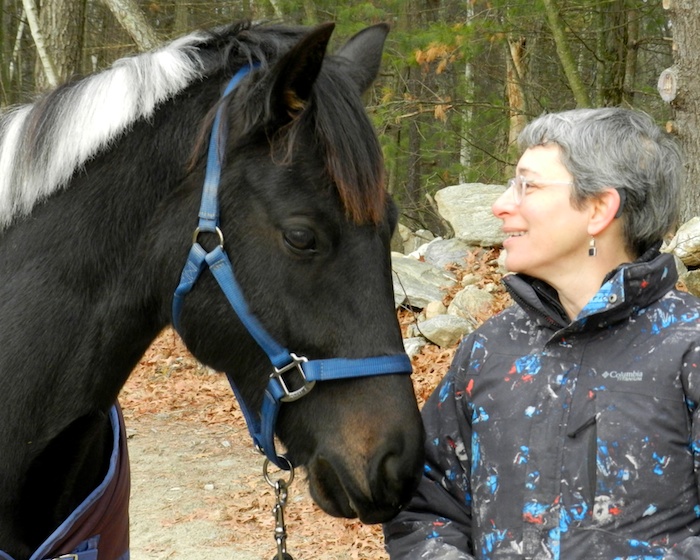
The CI is visible behind my ear.
To find out more about the research being done into hearing loss, visit the Hearing Health Foundation. I support them, and I hope that you will, too.
For information about hearing loss, assistive technology, and to find support groups, join The Hearing Loss Association of America. They are one of the few effective advocacy groups for hard of hearing people. It was by attending HLAA conventions years ago, that I learned about CIs, which gave me hope that there was better hearing on my horizon.

